Mention the words “Sarawak longhouse”, immediately images of the Iban’s traditional abodes of “village under one roof”, usually found in Central Sarawak, springs to mind. This long uninterrupted house with as many “doors” (one for each nuclear family), and with the common corridor running the length of it has been the favoured mode of living for the Iban as far as one can remember. But alas, with the onset of progress, and particularly the hazard of fires, most wooden longhouses of yesteryears have been rebuilt with partial concrete or some even wholly, the romance of visiting a full fledged genuine wooden/bamboo longhouses is long gone. Except for the Annah Rais Longhouse, that is.
Annah Rais Longhouse is the name of a predominantly Bidayuh settlement in the Padawan area about an hour drive due south of Kuching, It is in collaboration with the government tourism agency, purposely preserved in its original state, with belian (ironwood) pole stilts, wooden partitions, flooring and outdoor bamboo laced corridor with practically no cement parts, as a showcase of Bidayuh culture and tradition.
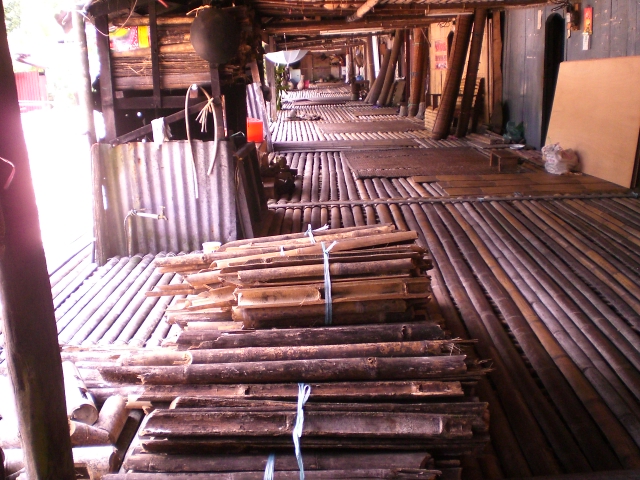
The corridor, or common walkway of the longhouse are laid with sturdy bamboo, a plant that grows in abundance in the Padawan area. In the foreground old bamboo are tied up to be used as firewood.
Although the Bidayuh, the second most numerous tribe in Sarawak after the Iban, did live in longhouses in the olden days, for some reasons they have abandoned this mode of abode many years ago and thus the majority of them are living in individual houses in the villages. Annah Rais is one of the very few Bidayuh longhouses that is still standing. The other notable Bidayuh longhouse nearby is the smaller Benuk longhouse.
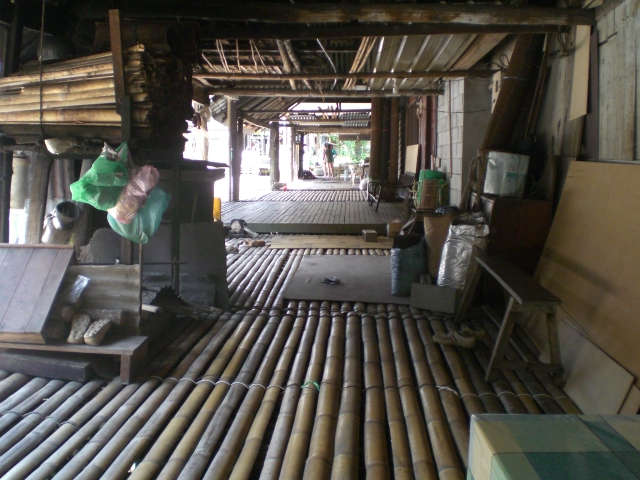
This covered corridor is where the longhouse dwellers sit and socialize after a hard day's work in the field. Often household work and even cooking are done here too.
The length of a longhouse is usually indicated by the number of pintu or doors and Annah Rais has about 146 doors, and a population of almost 3,000; comparatively long as most present day longhouses have 30 -40 doors only. According to the residents, seven generation of Bidayuh had lived in this longhouse which means it is almost two hundred years old. Of course over the years the many extensions and renovation has meant the original structure is no longer standing, but have resulted in a maze of interconnected walkways to the “doors” and is actually several longhouses connected to each others. In fact one section of the longhouse is located far across a stream and are connected by a bridge.

The entrance to a bilik or a "apartment" of a longhouse. Many household items are stored outside here without any fear of losing. Crime is practically non-existing in longhouse community.
A unit of the house is call a bilik and this usually has a frontage of about 15 feet and may go as deep as 50 feet. On entering a typical bilik, there is usually the general living area, then farther inside, a partition to demarcate the sleeping area. The kitchen and washroom is usually at the rear, and an air well in the middle allows sunshine to enter the otherwise dark interior of the dwelling. Most bilik also have a loft, a raised platform of sort, accessible by wooden ladders or notched logs. This is usually the store for their harvested padi, but it can be used as sleeping area too. A showhouse of this bilik is opened for visitors to enter and see up close on the surrounding.
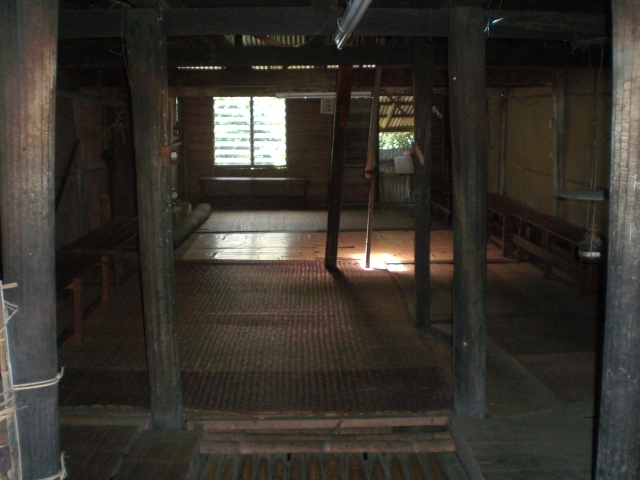
The interior of a "show house" bilik of a longhouse. The dark interior necessitates the airwell, and the notched log ladder in the centre is leading up to the loft.
Annah Rais longhouse is still fully occupied and the Bidayuh folks there go about their daily chores along the covered corridors, quite accustomed to the stares and gawking by groups of visitors to their homes. They are friendly and easy going and easy to chat up. A few enterprising families even set up counters in front of their bilik selling trinkets and handicrafts.
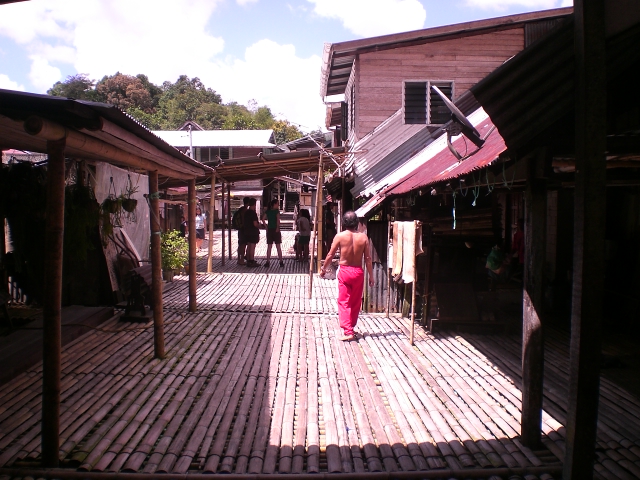
A view of the common opened walkway. This is the place where jungle produce like pepper, rubber sheet and harvested rice are dried under the sun.
There is an entrance fee of RM8.00 levied on each visitor, and this includes a welcome drink, a tumbler of “tuak”, a sweet rice wine traditionally brewed by the natives here. There is a traditional Bidayuh Homestay right among the longhouse for those who wish to experience roughing it out in this rustic setting. The nearby Annah Rais Hotspring provides another attraction to round up this half-day tour.
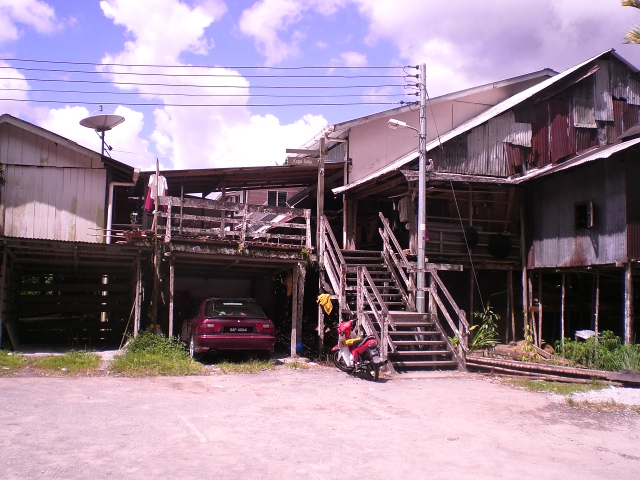














These are impressive articles. Keep up the sunny handiwork.